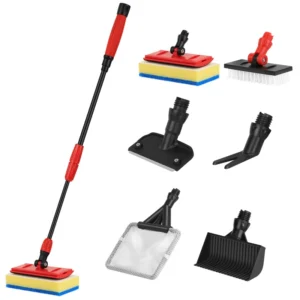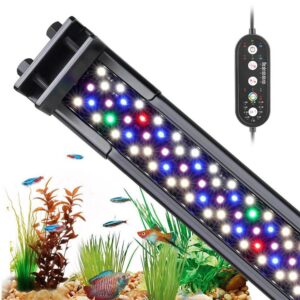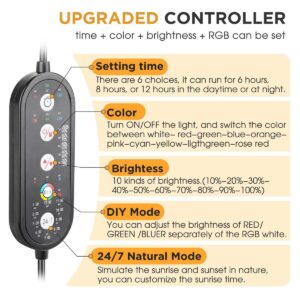The 10 Best Aquarium Floater Plants
Aquarium floater plants help largely in aquarium maintenance, which is otherwise the aquarists’ responsibility. Therefore, you may also think of growing such floater aquarium plants. These plants carry several benefits, cautions, and other aspects of proper selection. In this article, you will learn all about it with the top 10 best floater plants.
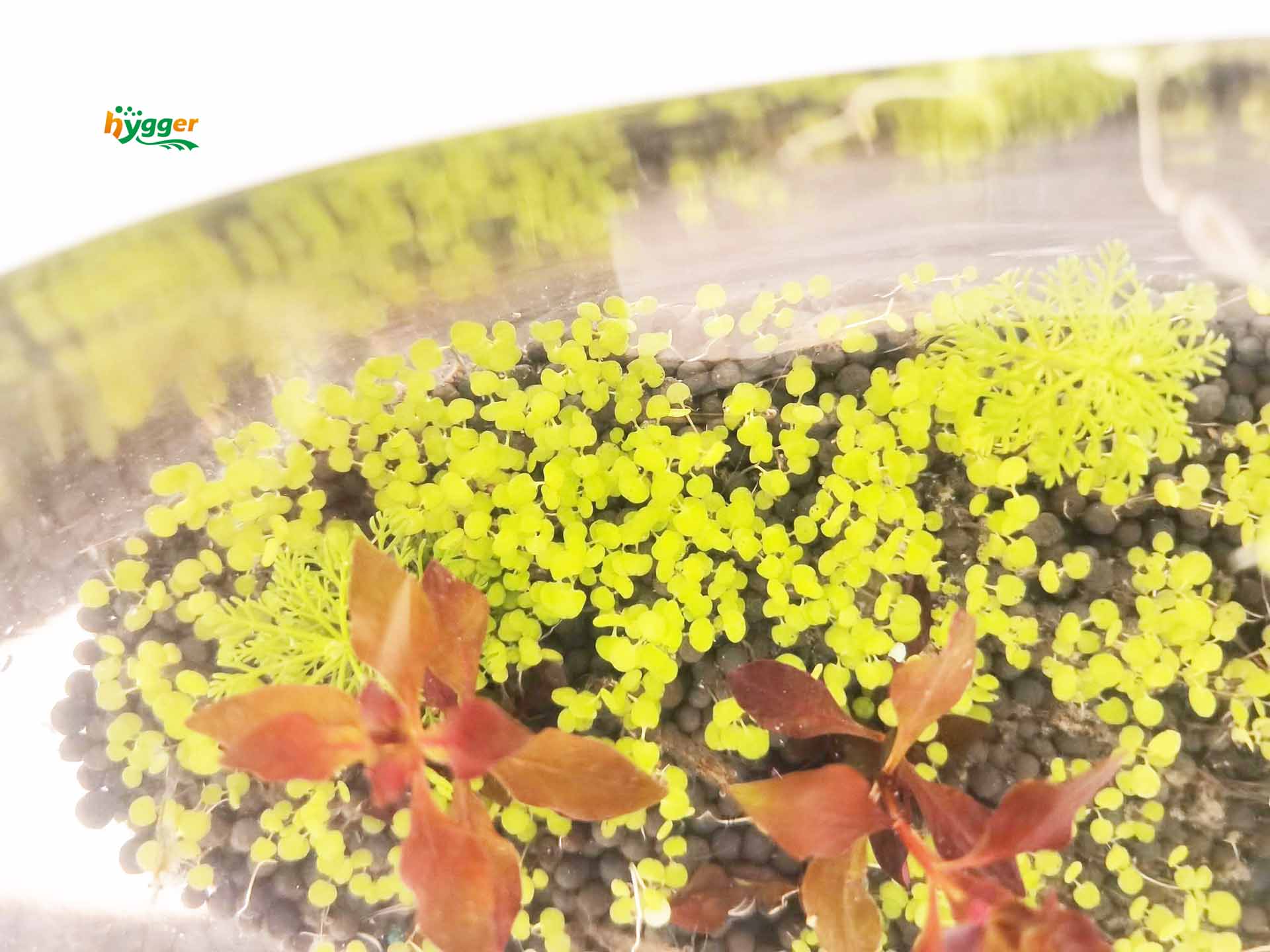
Floating Aquarium Plant Distribution
It is useful to understand the natural habitat of floating aquarium plants. It helps to understand all about these plants, i.e., suitable growth conditions, benefits, and suitable companions.
North America and Europe
Many of the North American and European countries are the origin of these aquarium floater plants. Water Lilly and Duckweed are examples of such a plant.
South America
In South America, the Amazon Basin is rich in different aquatic floater plants. You can find anacharis, Amazon Frogbit, water spangles, dwarf water lettuce, pennywort, and red root floater.
Southeast Asia
Many countries of Southeast Asia provide habitat to aquarium floating plants. Java moss and Subwassertang Fern are examples of such habitat plants.
African Water Bodies
African water bodies are also heaven for such plants. You can find numerous aquarium floating plants there, i.e., Water Hyacinth, Spatterdock, Lotus, etc.
Tropical Regions
Tropical regions also provide a conducive environment to many floating aquarium plants. Mosquito fern is an example of such a plant.
The Benefits of Floating Aquarium Plants in Aquariums
Growing floating aquarium plants provides several benefits in multiple aspects. Here are some benefits that you will get from these aquarium floater plants.
- It will improve the overall oxygenation of the tank.
- It will help to balance the nutrient level by consuming the extra nitrate, nitrite, and left-out fish food.
- They help to improve the overall aesthetics of the tank.
- Sometimes, aquarists forget to feed their pets on time. These plants can help as snacks for hungry aquatic pets.
- Provides cover to small fish and fry from aggressive companions.
- They help to reduce the lighting luminance up to the desired level.
- They help to control algae growth.
- Provides exciting places to fish.
- Help to reduce the water toxin.
- They help in improving the water quality of the tank.
- Acts as natural water filters.
Top 10 aquarium floater plants
Here are the top 10 of the most suitable floater plants for aquariums, with their characteristics and other features, you can choose the best one according to your tank.
| Duckweed | 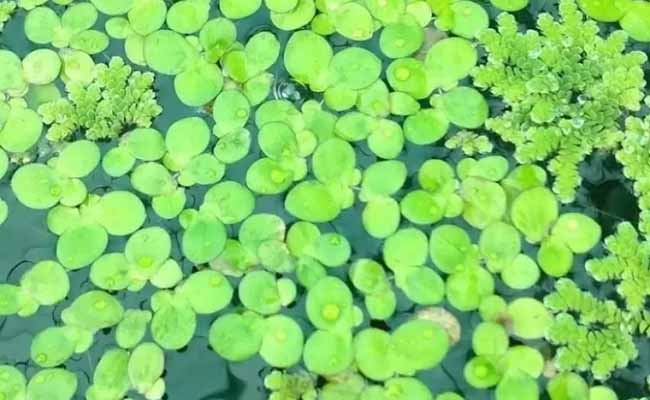 |
| Duckweed is a small and free-floating plant that combines to make a green carpet over the water surface in a fish tank. They grow at a fast pace in optimal conditions. It almost doubles in duration from 16 hours to 2 days. They can survive in various conditions, but 20 – 30℃ is the optimal temperature. | |
| Duckweed provides a better shelter for fish. Therefore, you can accompany it with fry, shelter-loving, and small fish. It makes the tank well-oxygenated and nutrient-balanced. Its growth rate is very high. So, do proper time-to-time trimming to keep it within its boundaries. But don’t forget to control the Duckweed in some cases. | |
| Anacharis | 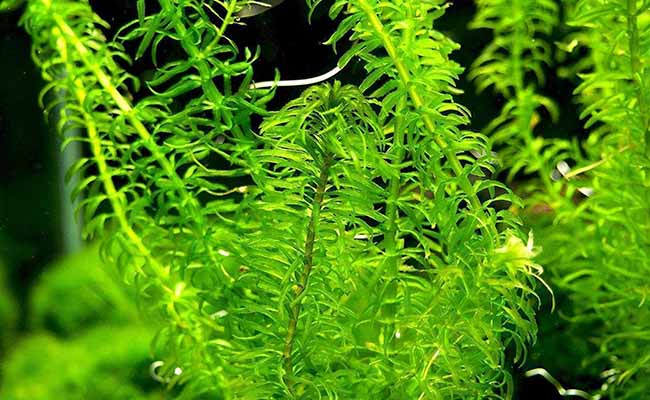 |
| Anacharis is another aquarium floater plant that will give your tank a naturalistic look. Anacharis have long, green, and ribbon-like leaves with a bushy growth style. They can reach up to 3 feet with almost 2 centimeter growth per week. High temperature and normal pH, i.e., 6.5 to 7.5, are required for optimal growth. | |
| Turtles, snails, and catfish can also accompany it. It improves the oxygenation of the tank, helps in nutrient balance, and is a delicious snack for the tank’s inhabitants. Optimal light conditions are necessary. Otherwise, it will die. | |
| Water Spangles | 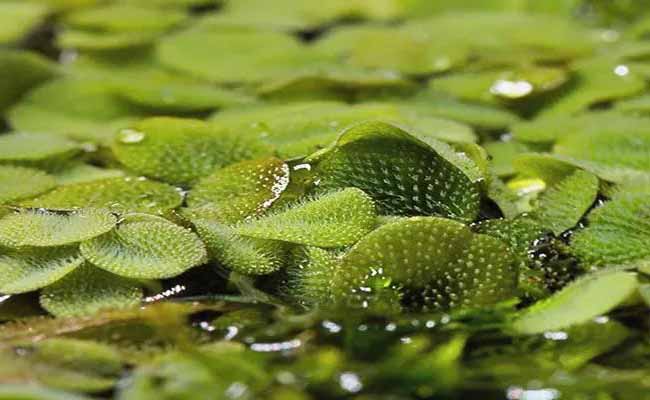 |
| White-haired with two oval-shaped green leaves and apparent glow is the sign of water spangles. Its leaves can grow up to 4 inches, i.e., 10cm. However, they double themselves at a fast pace. Slightly acidic and shallow waters, medium to high light intensity, and low nutrient availability help to cover the surface area within a few weeks. | |
| If you have Buenos Aires tetras, shrimps, and other herbivore fish in your aquarium, then water spangles are among the best options. It’s easy to take care of water spangles, but you often need to clean the tank to shattered yellow leaves accumulation. | |
| Amazon Frogbit | 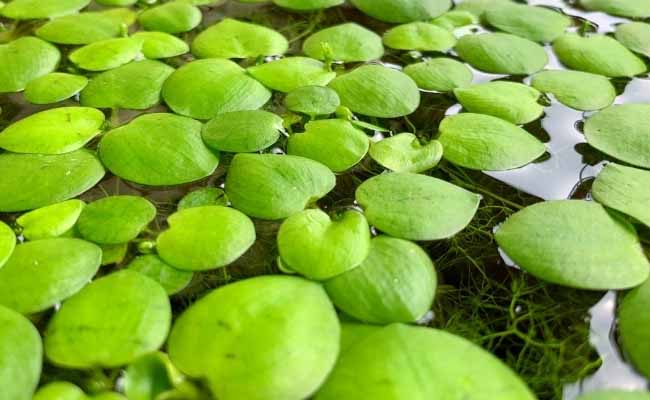 |
| Amazon Frogbit is another aquarium floating plant. It mimics a miniature water lily. It grows at a fast pace and maximally grows up to 50 cm in height. You can use it as a decor piece as it bears pale yellow flowers. It thrives in soft water and high-light-intensity conditions. | |
| You can accommodate it with various fish species, i.e., Tetras, Clownfish, Bettas, Gouramis, Goldfish, and Silver dollars, and use it to make your aquarium oxygenated, nutrient balanced, algae control, and snacks for aquatic pets. But don’t submerge its leaves on the plantation. | |
| Dwarf Water Lettuce | 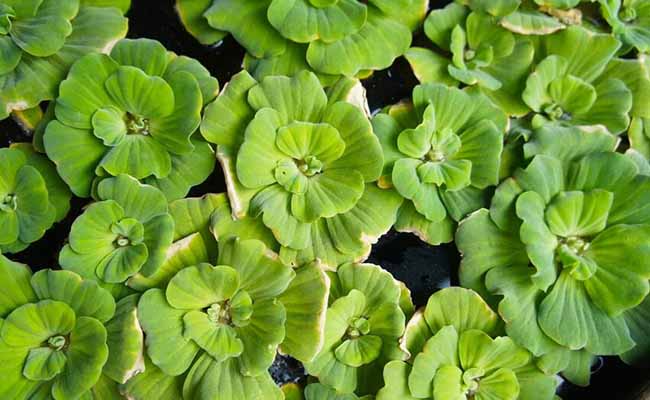 |
| Light-green and cabbage-like appearance, Dwarf Water Lettuce is another best option among aquarium floater plants. It has small, fleshy, and rounded leaves, its small flowers often hide themselves in leaves. It can grow up to 2.5cm with a medium to fast growth rate. | |
| Medium-light intensity, slow-moving or stagnant water, and 20 to 30-degree centigrade temperature are suitable to grow it. Dwarf Water Lettuce also provides shade to fry and small fish and helps in maintaining the tank’s nutrient balance. | |
| Pennywort | 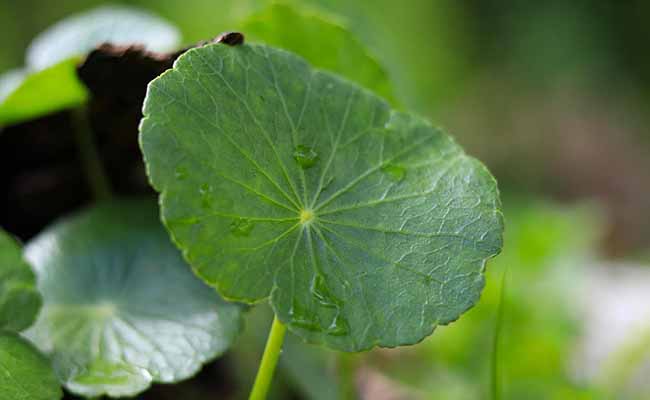 |
| Pennywort is another floating plant for aquariums that brings life to the house of your fish. It has a long and fleshy stem with round or kidney-shaped green leaves. It requires less maintenance as it grows at a low pace. You can accommodate these plants in various light and water conditions. | |
| It is not better to accommodate it with aggressive fish, i.e., cichlids or goldfish. Along with many other benefits, you can use pennywort in medicine. It proved magical for many diseases, i.e., Scrofula, Ulcers, Rheumatism, Headaches, Dizziness, etc. So, growing this pet and health-friendly aquarium floater plant is beneficial. | |
| Mosquito Fern | 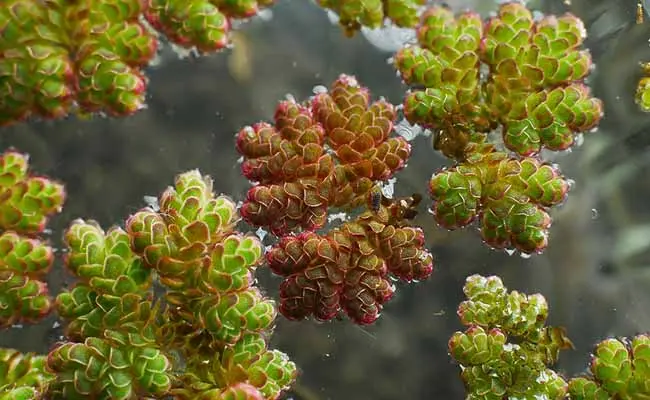 |
| Small and free-floating mosquito fern is another among aquarium floater plants. It grows along the surface with a high growth rate. It duplicates its biomass within a week, under suitable conditions. | |
| Slow-moving water with 20 to 28℃ is a suitable growth condition for mosquito ferns. It acts as a food source, can reduce mosquito breeding by up to 95%, and removes environmental pollution. It’s easy to take care of it as it can survive in a large range of pH and temperature, but be careful about its pruning. | |
| Subwassertang Fern | 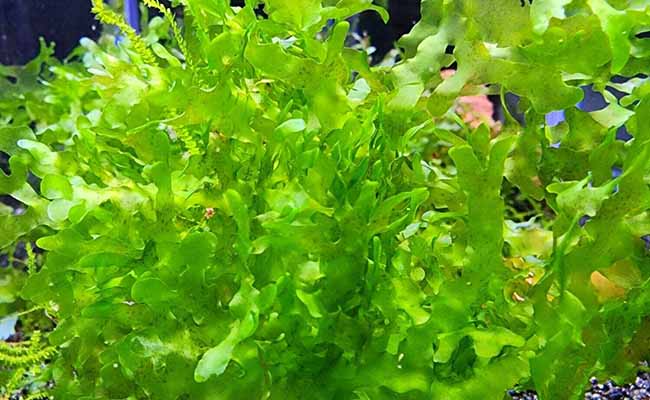 |
| Subwassertang fern looks like liverwort, Monosolenium tenerum. It has light green, moderately strong stem, and cues. Like many aquarium mosses, it takes time to grow, but once it settles, then there is no big issue. It can grow between 15 – 28℃, with good lighting, and nutrient-rich water. | |
| You can accommodate large aquatic pets with it, i.e., Tetras, Rasboras, Bottom feeders, Corydoras, Gobies, Loaches, and Plecos. It improves the tank’s oxygenation, removes water toxins, neutralizes the water, and provides a haven for small fish and fry growth. | |
| Red Root Floater | 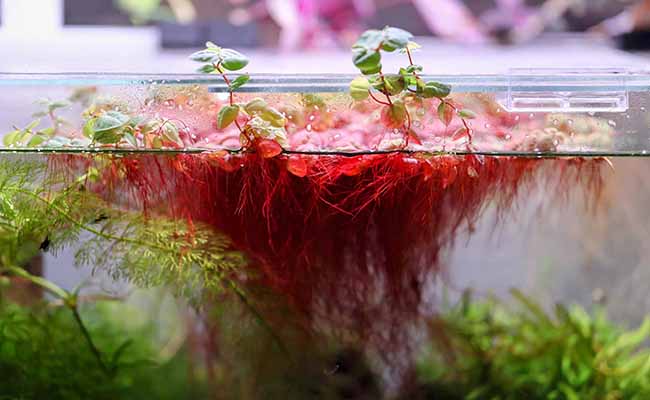 |
| Red root floater joins the best aquarium floater plants with velvet-like leaves that can turn red in specific conditions. It is named after its red-colored roots and grows at a medium pace, up to 3-5 cm in height. Suitable water temperature, i.e., between 24 to 28℃, a normal pH, and a wide range of light intensity, helps it thrive at a better rate. | |
| Many aqua pets, i.e., Shrimp, Fry, Betta fish, and Turtles can accompany it. It improves tank oxygenation, and toxin removal, controls algae growth, and maintains the tank nutrient level. | |
| Java Moss | 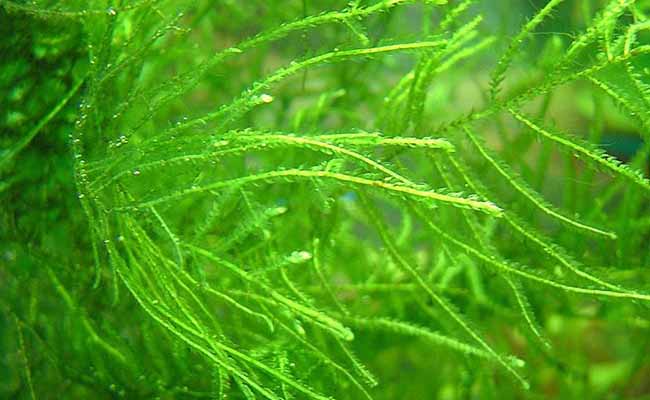 |
| Java moss is a floater plant that decorates and helps to improve the overall aquarium environment. This small and green floater aquarium plant equally grows in fresh and saltwater tanks. It takes about 3 to 4 weeks to establish itself. 19 – 28℃ and 5.0 to 8.0 pH is suitable for its optimal growth. | |
| Java moss can accompany many fish and invertebrates. It helps to improve the nutrient balance and oxygenation of the aquarium and provides a cover to fry and small fish from big and aggressive fish. | |
Keep Live Plants From Floating in the Aquarium
Here are some care tips to keep the floater plants floating and growing lushly in your aquarium.
- Keep a check on pets in your aquarium. If you find any of the pets, remove them completely and carefully.
- Always grow such a plant according to your time for the aquarium. Some plants require high maintenance, and vice versa.
- Regularly prune your plant according to its growth rate.
- Avoid overcrowding to ensure proper lighting below the shade of the plants. Because fish also need it.
- Maintain the temperature according to your planted species. Most of the plants discussed above thrive between 20-28℃.
- Although most of the discussed plants don’t need too much care. However, you must maintain the water parameters according to the plants, i.e., pH, hardness, temperature, etc.
- Reduce the water surface agitation. Most of the aquarium floater plants grow well in calm water conditions.
- Fertilization is optional or used according to requirement. Mostly, plants draw nutrients from aquarium water.
Conclusion
Floating aquarium plants improve the overall aesthetics along with improving the tank environment. Some of the best and most popular aquarium floater plants are discussed in this article, with the taking care guide for them. We hope you have learned from them.

